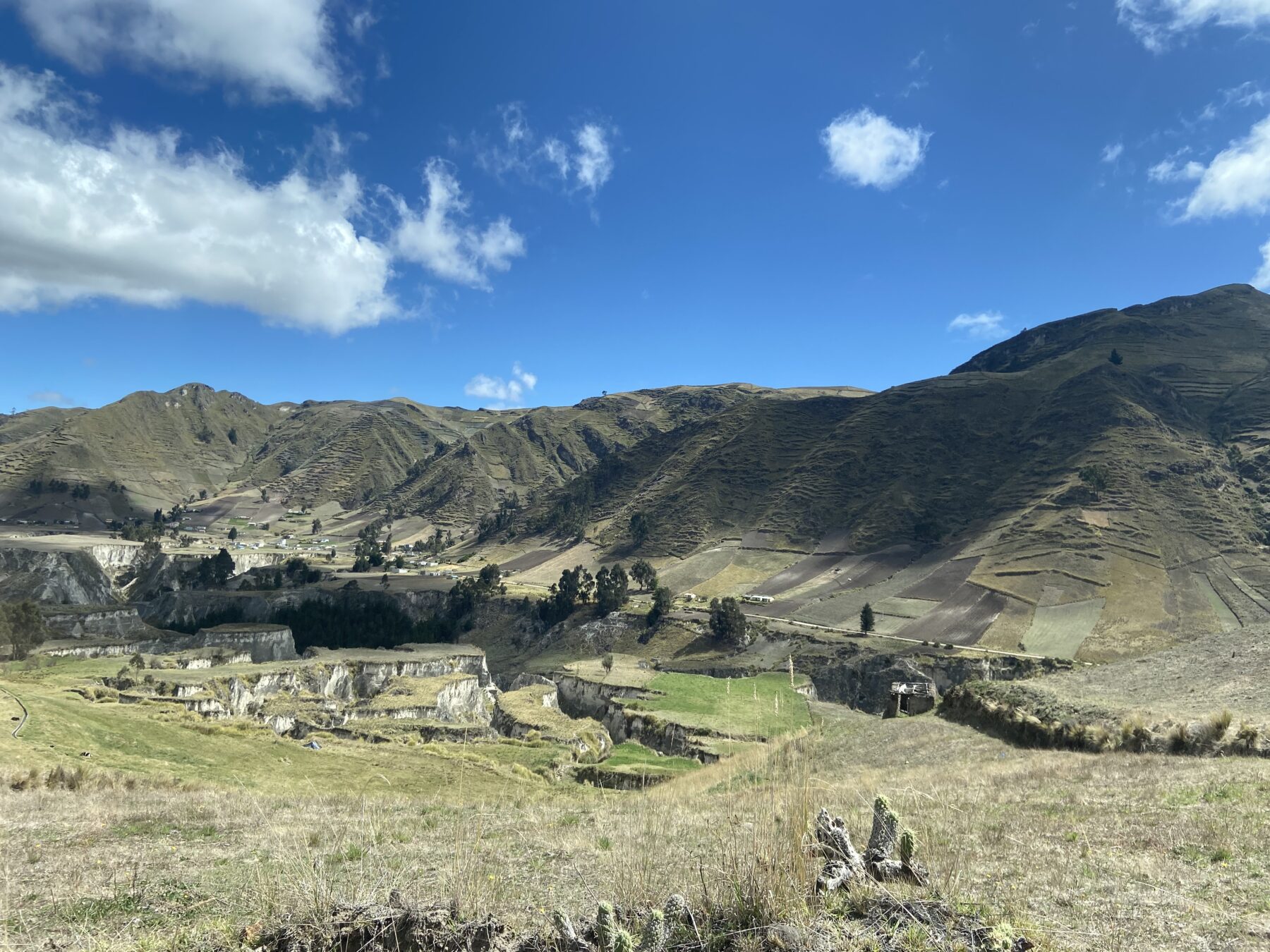All you need is Ecuador
“All you need is Ecuador” is one of the slogans promoted by the Tourism Office. And indeed, the more I find myself writing about this wonderful country, the more I realise how deeply it has touched me—far more than many other destinations. Over the years, Ecuador remains one of the most complete journeys of my life.
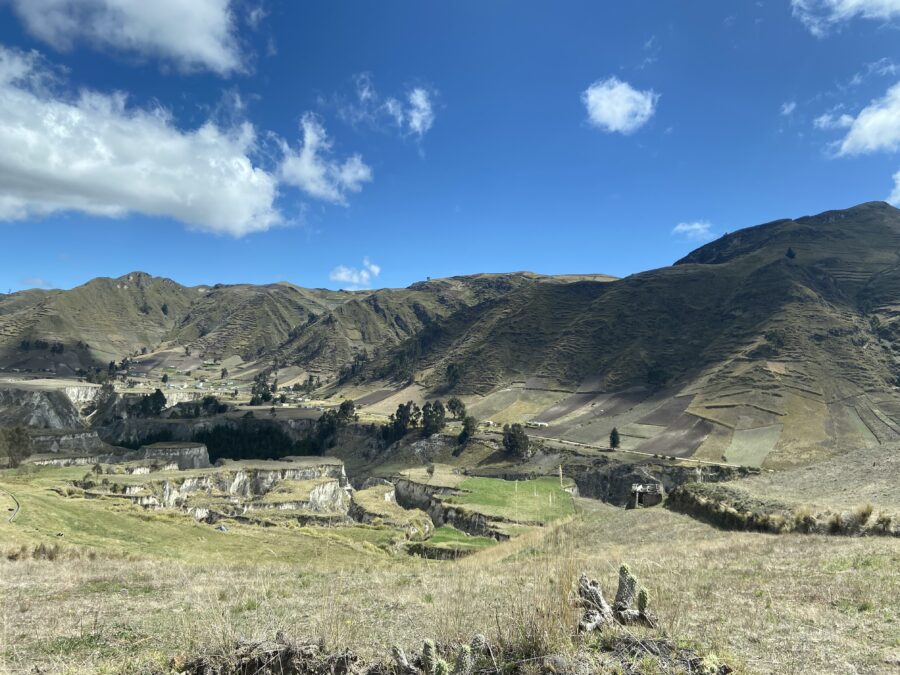
Together with Bolivia, it often comes up when I’m asked: “What’s the most beautiful trip you’ve ever taken?” A somewhat silly question, because how can you choose, how can you decide when life is a river and everything changes? And yet, Ecuador consistently reappears in my thoughts.
So, the journey continues. We head to Ingapirca.
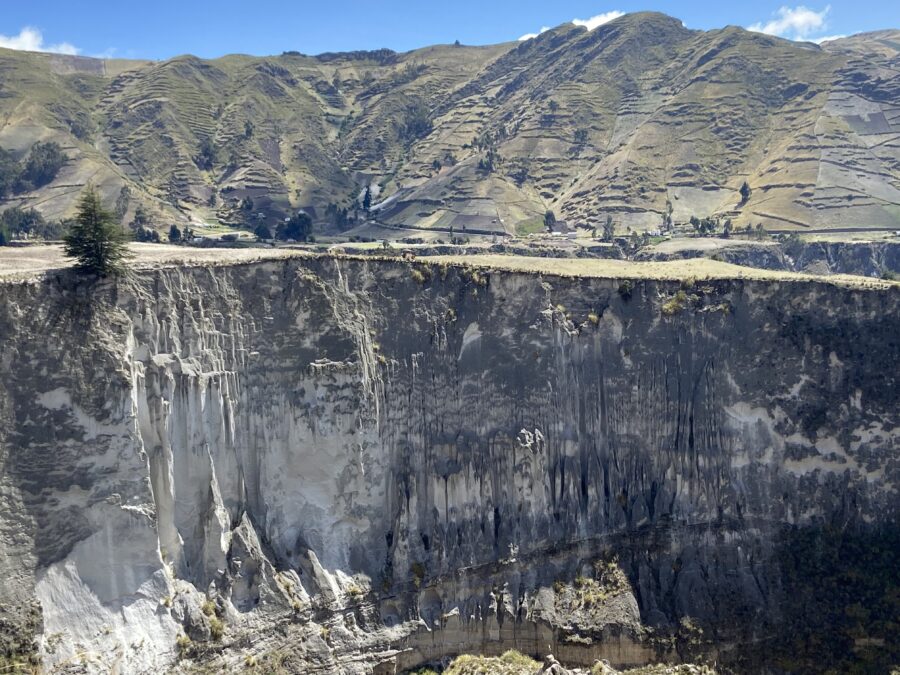
Ingapirca
Getting there is a journey within the journey. From Cuenca, the road winds through hills and villages nestled in the green folds of the Andes.
But the first thing I remember about this archaeological site isn’t beautiful—it’s the brutal cold at night. At about 3,300 metres above sea level, we stayed in a rundown guesthouse. Despite the comfy beds and the fact that I slept fully dressed, shoes and hat included, the cold seeped into my bones. By morning, I felt like I’d been run over by a lorry. Without breakfast and with considerable physical and mental effort, I pushed that lorry out of my thoughts, knowing I had a special day ahead—a unique travel opportunity.
Ingapirca—meaning “Inca wall” in Quechua—is much more than a collection of ancient stones. It’s a dialogue carved in rock, a story of coexistence and resistance. It’s a bridge between two seemingly distant worlds that, here, touch: the Cañari and the Inca.
The Cañari, the original inhabitants of these lands, worshipped the Moon. The Inca, who arrived later, brought with them the cult of the Sun. Two different cosmologies, two ways of reading the sky and the earth. And yet, they met here. Not without conflict, of course—the Inca initially tried to conquer the Cañari. When they failed, they chose to live alongside them. This strange balance is palpable as you walk among the ruins: the precise, geometric Inca architecture blends with the more organic style of the Cañari. The result is a unique harmony that speaks of adaptation.
The heart of the site is the Temple of the Sun, built with perfectly interlocking stones, without mortar. An elliptical structure, astronomically aligned: during the solstices, sunlight would pass directly through the temple’s entrance. A detail that reveals how deeply these civilisations (long before our rather useless modern era) observed and understood the cosmos.
I remember two more things about Ingapirca. First, our guide: theatrical, incredibly knowledgeable, at times funny, explosive, and smiling—just like many Ecuadorians. Looking back at my notes while writing this article, I regret one thing: not writing down his name. He told us everything—literally everything—about Ingapirca: from where to find the toilets, to the excavations, to the challenges of coexistence between the Cañari and the Inca, to his children, to the distant Chimborazo. Everything.
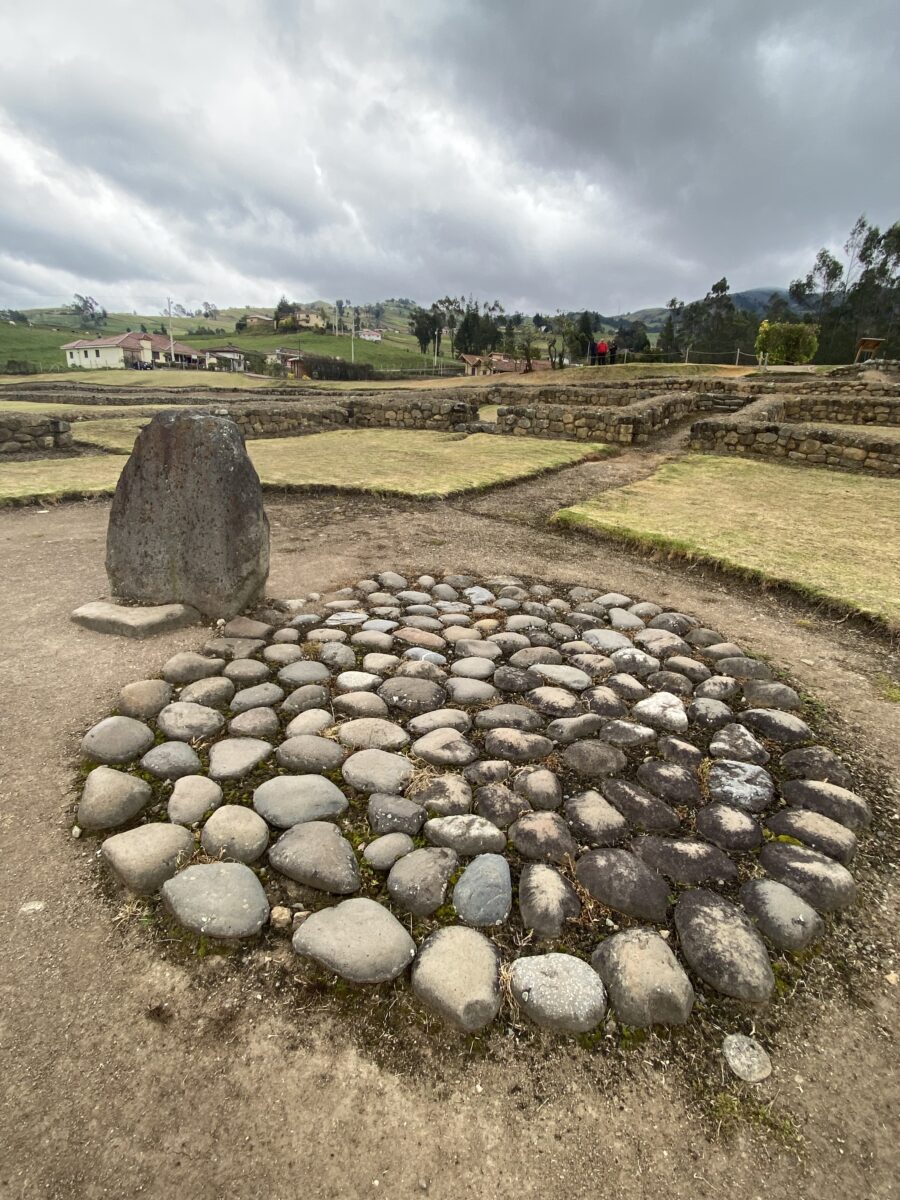
But most of all, I remember the tomb at the centre of the site. According to some archaeological interpretations and local stories, the remains of an important female figure—perhaps a priestess or queen—were found here, having died of natural causes. Next to her were the remains of ten others, likely servants or ritual companions, who may have died voluntarily or through ritual sacrifice. Some theories—though not universally confirmed—suggest they ingested hallucinogenic or psychotropic substances as part of a funerary ritual, a practice not uncommon in some ancient Andean cultures, where it was believed that servants should accompany nobles into the afterlife. They were found in foetal position, as in many other cultures: only this way could they be reborn into Pachamama.
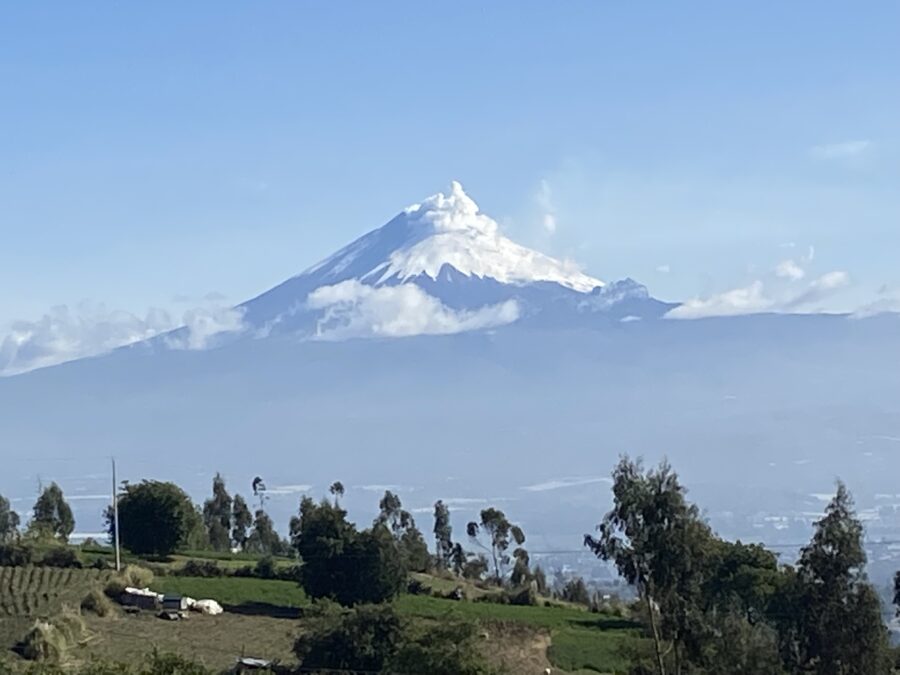
Chimborazo: the border between earth and sky
After leaving Ingapirca, that afternoon we had a grand, absurd idea: to climb Chimborazo. Well, not to the summit—but let me explain.
This volcano is a silent colossus that dominates central Ecuador with its glacial majesty and legendary aura. It’s the point on Earth closest to the sun. More precisely, although it’s not the tallest mountain in absolute terms, its position on the equator makes it the farthest point from the planet’s centre.
At 6,268 metres above sea level, Chimborazo is also Ecuador’s highest volcano and the undisputed king of the so-called Avenida de los Volcanes. Its summit is perpetually covered in glaciers, once “harvested” by the hieleros—men who transported ice blocks to coastal city markets. Geologically, Chimborazo is an andesitic-dacitic stratovolcano. Though it has no recorded historical eruptions, it has erupted at least seven times in the past 10,000 years, the last about 1,400 years ago. This makes it technically still active, though now considered dormant.
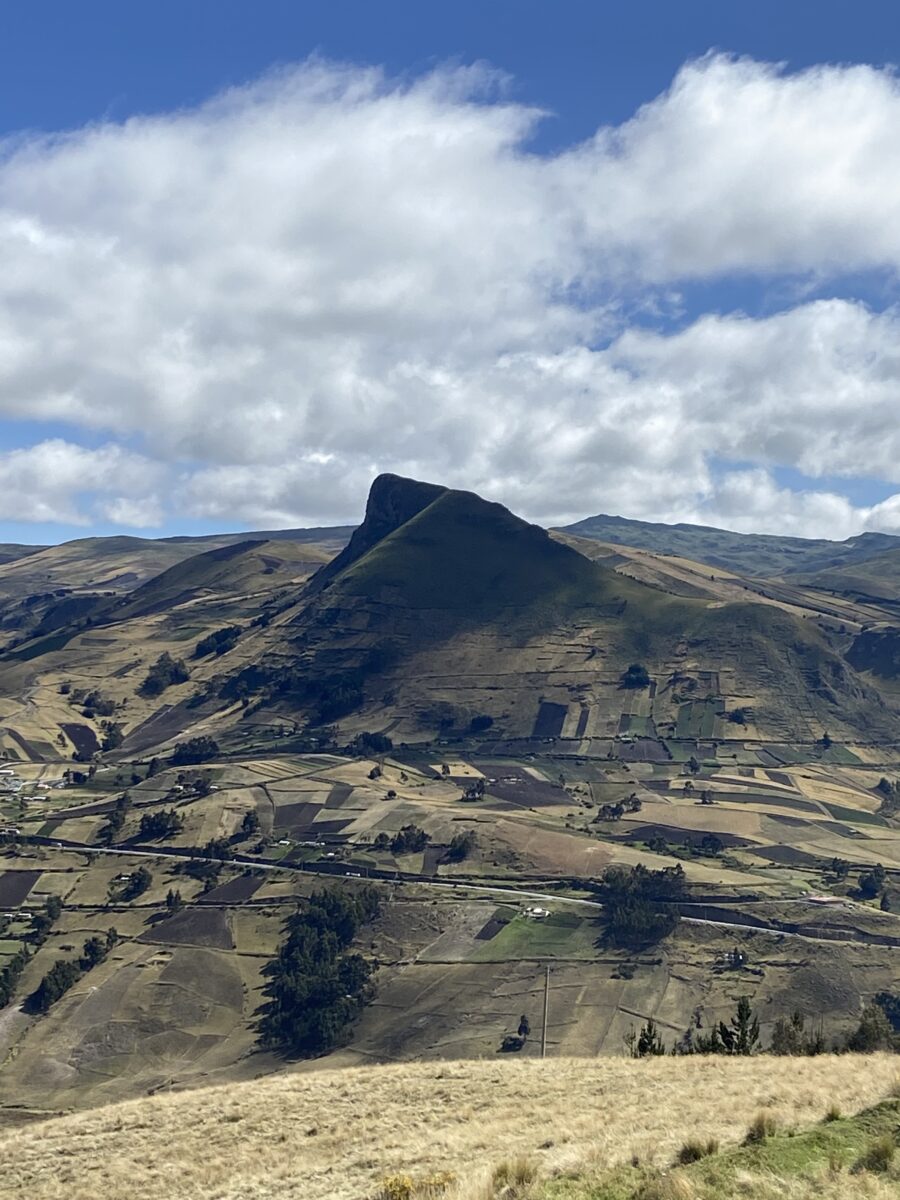
Climbing Chimborazo requires preparation, acclimatisation, and respect. The two main shelters—Carrel (4,850 m) and Whymper (5,000 m)—are the starting points for those attempting the summit. As I mentioned above, that afternoon we had a plan: to drive up to 4,386 metres and then, slowly and with lungs likely to catch fire, hike to Carrel. Well, we never made it to Carrel: the entrance to that part of the mountain closed at 2 p.m. Every itinerary is just a whisper: travelling means accepting that the map redraws itself with every step. We arrived at 3 p.m., took a few photos where the sky meets the earth, and continued to Baños de Agua Santa.
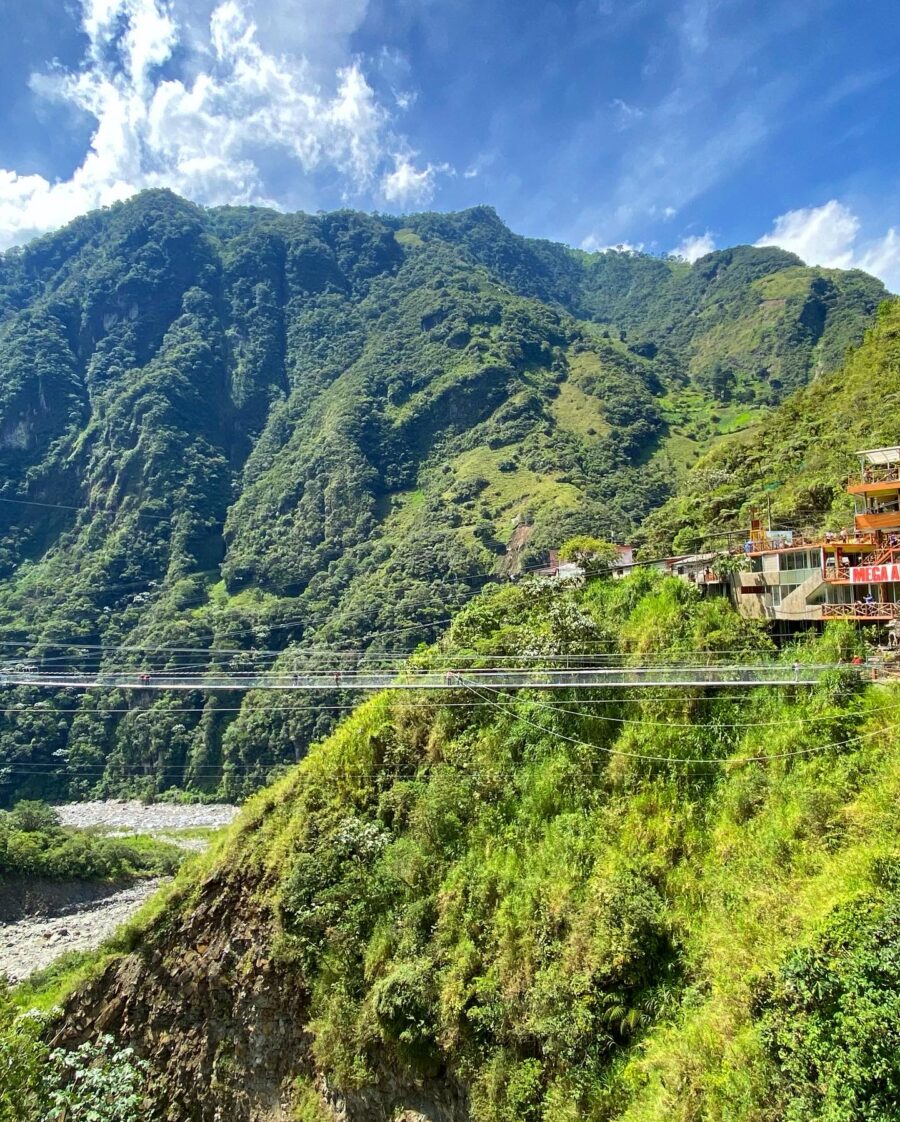
Baños de Agua Santa: the “rides” and a bit of well-deserved rest
In Baños de Agua Santa, time takes on a different rhythm: the streets are alive, full of stalls selling sugarcane sweets and local crafts. One of the most interesting parts of this place is the central market: rows of small restaurants serve fragrant, hearty meals for two dollars. We sit alongside young locals and Indigenous people. Food unites the world—where food is available.
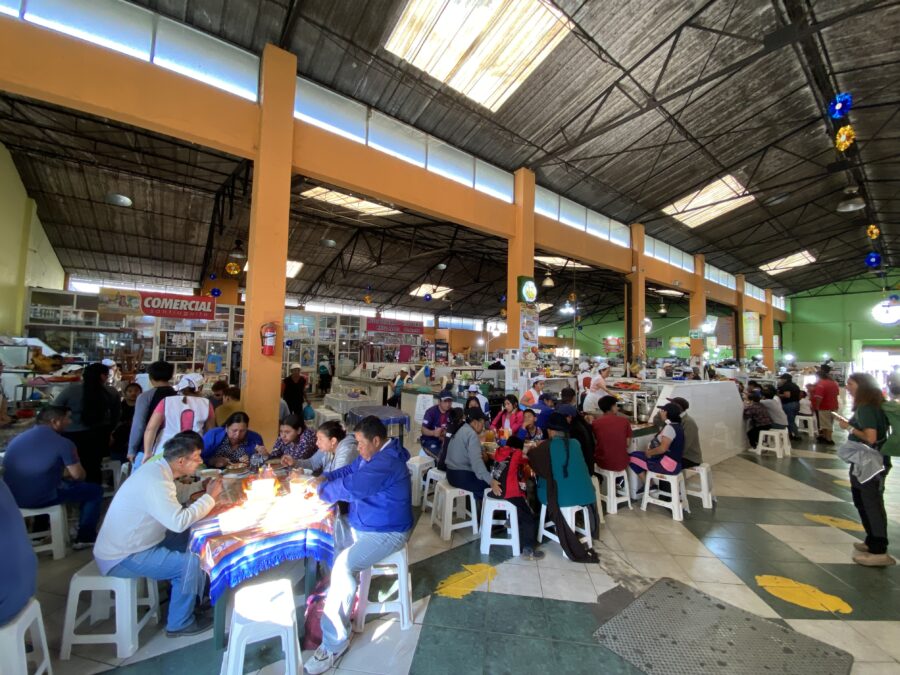
Walking through its streets, I look up and truly understand where I am: the Tungurahua, often shrouded in mist, silently watches over everything. And perhaps because of the volcano’s presence, there’s another feeling around Baños: the adrenaline of the “rides.” Baños is the kind of place where you find yourself zip-lining over a deep gorge or swinging from the Casa del Árbol, with nothing but air beneath your feet and sky in your eyes. Here, the boldest push their limits. I’m not one of them—I just watch the local travellers throw themselves into the void.
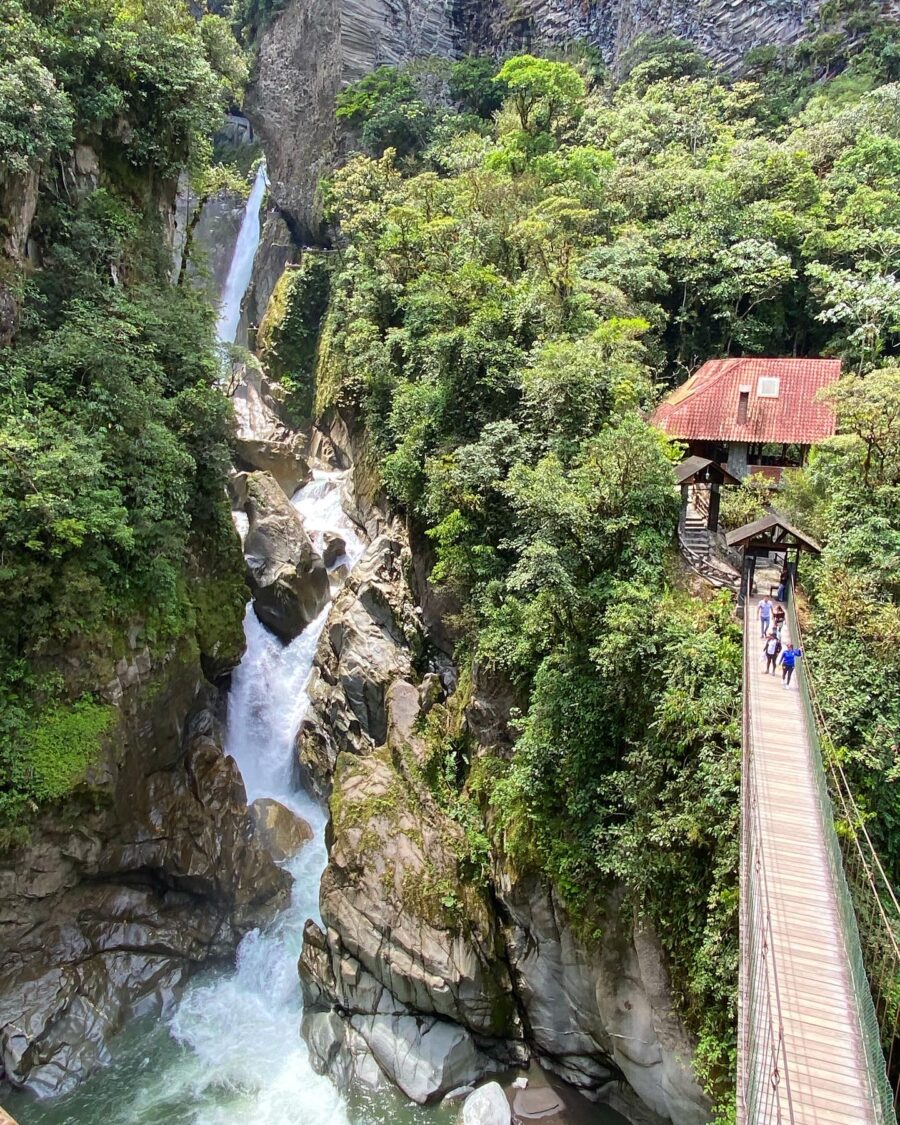
But water is the true soul of Baños, as its name suggests. It flows everywhere: from roaring waterfalls like the Pailón del Diablo, which crashes down on you with the force of a thousand drums, to the hot springs where locals and travellers soak at sunset, seeking healing and peace. My travel companion and I, a bit tired from the previous days’ adventures, decide to enter the thermal baths: we pay $4.50 and plunge into the steaming pools. Our skin becomes smooth; our muscles relax with a one-hour massage for $20. The mind drifts upward, to where the Virgen de Agua Santa is venerated as the protector of travellers and miracles.
And Ecuador is a miracle, and we are travellers.
